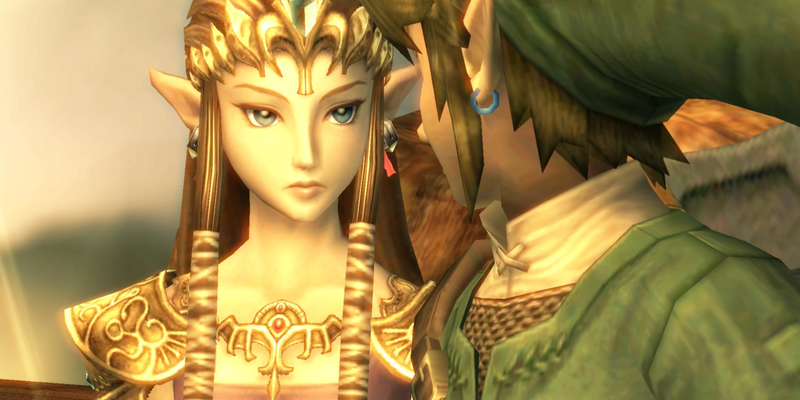Traversing Time and Fantasy: The Evolution of The Legend of Zelda Series

The Legend of Zelda series stands as a monumental pillar in the gaming world, captivating hearts with its rich lore, intricate puzzles, and unforgettable adventures. From its 8-bit inception to the expansive realms of its latest releases, the series has undergone an extraordinary journey, evolving with each game while retaining the essence that fans adore. This article explores the evolution of The Legend of Zelda, highlighting how each installment has contributed to the series' enduring legacy and what makes this saga a timeless adventure in gaming.
The Birth of a Legend

In 1986, the gaming world was introduced to The Legend of Zelda, a pioneering title that blended exploration, puzzle-solving, and action in a way that had never been seen before. Its 8-bit graphics and simple yet captivating soundtrack laid the foundation for what would become one of the most beloved franchises in video game history. Players took on the role of Link, a young hero tasked with rescuing Princess Zelda and battling the evil Ganon to save the land of Hyrule. This formula of heroism, exploration, and combat would become the series' hallmark, evolving with each new title.
The 16-Bit Era and A Link to the Past
The series' transition to 16-bit graphics with The Legend of Zelda: A Link to the Past on the Super Nintendo Entertainment System marked a significant evolution in its visual and narrative depth. Released in 1991, this game introduced a more complex story, a larger world to explore, and the concept of an alternate dimension, the Dark World. The intricate dungeons, memorable music, and the introduction of key items that would become series staples, such as the Master Sword, solidified A Link to the Past as a groundbreaking achievement in gaming.
Entering the Third Dimension: Ocarina of Time

In 1998, The Legend of Zelda: Ocarina of Time revolutionized the series by transitioning to 3D graphics on the Nintendo 64. This game not only showcased the potential of 3D gaming but also introduced a real-time combat system, an immersive storyline involving time travel, and a vast open world that set new standards for the adventure genre. Ocarina of Time is often hailed as one of the greatest video games of all time, thanks to its innovative gameplay mechanics, engaging story, and emotional depth.
The Cell-Shaded Adventure: The Wind Waker
With the release of The Legend of Zelda: The Wind Waker in 2002 for the GameCube, the series took a bold artistic turn. Its vibrant, cell-shaded graphics and expansive oceanic world offered a stark contrast to the darker tones of its predecessor, Majora’s Mask. Despite initial skepticism regarding its art style, The Wind Waker was praised for its engaging exploration, dynamic combat, and compelling narrative. Its legacy endures as a testament to the series' capacity for reinvention and innovation.
The Twilight Realm and Motion Controls: Twilight Princess and Skyward Sword

The Legend of Zelda: Twilight Princess (2006) returned to a darker narrative, introducing players to the Twilight Realm and providing a more mature storyline. Released for both the GameCube and the Wii, it utilized the Wii’s motion controls to offer a novel gameplay experience. Following this, The Legend of Zelda: Skyward Sword (2011), also for the Wii, further refined motion controls and provided an origin story for the Master Sword, deepening the series’ lore and mythology.
A New Dawn: Breath of the Wild
The release of The Legend of Zelda: Breath of the Wild in 2017 for the Nintendo Switch and Wii U marked a revolutionary leap for the series. Abandoning the traditional linear structure, it presented an open-world Hyrule, teeming with mysteries, challenges, and freedom unlike any Zelda game before it. Its breathtaking visuals, dynamic weather system, and physics-based puzzles set a new benchmark for open-world gaming. Breath of the Wild was a critical and commercial triumph, earning numerous Game of the Year awards and redefining what fans could expect from the franchise.
The Legacy Continues

The Legend of Zelda series has continuously evolved, with each installment building upon its predecessors to offer fresh experiences while staying true to the core elements that fans cherish. From 2D to 3D, linear to open-world, each game has pushed the boundaries of gaming in its own way. The series' emphasis on exploration, puzzle-solving, and storytelling has influenced countless other games and has established The Legend of Zelda as a masterclass in game design.
Conclusion: A Timeless Adventure
Over three decades since its debut, The Legend of Zelda series continues to enchant players with its blend of myth, magic, and adventure. Its journey through time, from 8-bit origins to the expansive realms of Breath of the Wild, showcases an unparalleled evolution in gaming. Each title in the series not only contributes to the rich tapestry of Hyrule's lore but also stands as a milestone in the industry. As we look forward to future adventures with Link, Zelda, and the many characters of this beloved world, one thing remains clear: The Legend of Zelda is a timeless adventure, forever etched in the hearts of gamers around the globe.









User's Reviews (0)
Your comment is awaiting moderation. We save your draft here
Leave a comment